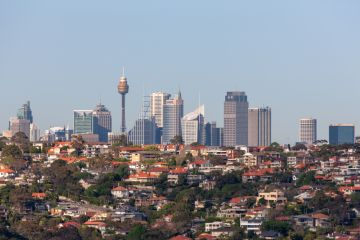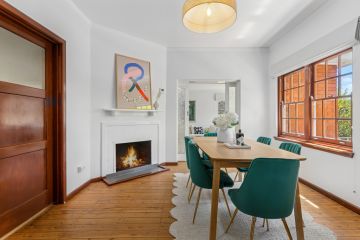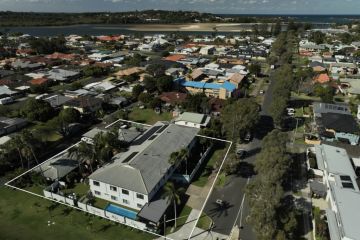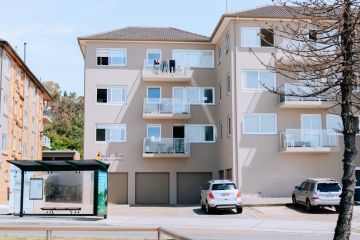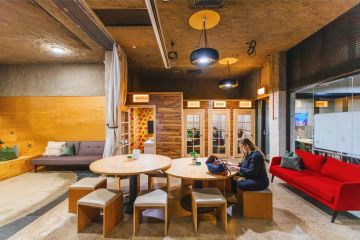Sydney's one-bedroom apartment rents squeezing singles into sharehouses

Despite Sydney’s rentals being the smallest in the country, singles are being squeezed into house-sharing arrangements due to sky-high rents, new data shows.
The cost of renting a one-bedroom apartment in Sydney’s CBD is now $645 a week, a room-by-room breakdown of rental advertisements by tenant advocacy company Don’t Rent Me found.
And in other areas where one-bedroom apartments are common, such as Manly, Zetland and Pyrmont, the cost is in excess of $585 a week.
The vast majority of apartments in NSW are two-bedrooms – with 2298 – followed by 1322 one-bedroom apartments.
And in many suburbs, one-bedroom apartments aren’t substantially cheaper than two-bedroom apartments, forcing some tenants to change their wishlist.
In Burwood, a one-bedroom apartment is $531 a week, compared to $630 for a two-bedroom. In Manly, the cost difference is $623 and $788.
And in Parramatta it’s $400 for one-bedroom compared to $474 for a two-bedroom apartment.
Among those who has noticed the marginal difference is Sydney renter Jemma Kay – she is 27, single and doesn’t want to live with strangers. But when she searched the listings portals, the cost of renting solo was out of her budget.
“[It’s] $500 or $600 for a one-bed in the CBD area. Even looking further out west, there’s nothing less than $400 that’s decent.”
Now, she’s renting in Stanmore, paying $325 a week for a room in a two-bedroom sharehouse.
This experience is common for renters, Tenants Union of NSW senior policy officer Ned Cutcher said.
“A lot of people who’d like to rent alone can’t afford to, they end up with a room in a sharehouse or boarding house,” Mr Cutcher said.
In suburbs where the typical rental has under two bedrooms, the research recorded the average weekly rent at $539 a week.
And it’s not just singles struggling with properties that don’t suit their needs – the other end of the spectrum, families, are struggling to find appropriate housing as well.
Across NSW, three-bedroom homes are the most typical homes – with 2562 recorded.
But when you look at the apartment market, which is predominantly what is available in inner- and middle-ring Sydney, there were only 719 three-bedroom apartments available.
Don’t Rent Me founder Anthony Ziebell warned too much of a focus on investors, rather than those who will actually be living in the properties, is leaving Sydney filled with “inappropriate” homes.
“Sydney’s rentals are the smallest in the country,” he said.
“If you’re building an apartment block, how many one-bedroom apartments can you sell compared to three-bedroom apartments?
“It’s not about providing suitable housing, it’s about getting the maximum profit. This is leaving renters without anywhere suitable to live,” he said.
Developer lobbyist Chris Johnson, chief executive of the Urban Taskforce, agreed there was an issue with developing homogenous mid-sized properties.
He said 70 to 80 per cent of what is being developed are two-bedroom apartments, but there was a growing need for two different types of property – the sub-50 square metre ‘micro-apartment’ and the bigger, family friendly rental apartment with three or more bedrooms.
“The bigger an apartment is, the more costly it is … prices in Sydney are over the top and apartments are a far more affordable way of living than a house,” Mr Johnson said.
But it’s not likely investors will be jumping to buy these properties.
Just Think Real Estate licensee in charge Edwin Almeida, who manages rental properties across Sydney, said the difference in price between one- and two-bedroom apartments can be “substantial”.
“In the last three or four years there has been more appetite [from investors] for one-beds, often because they’re cheaper for investors with better yields,” Mr Almeida said.
“In the northern beaches, managements we have taken over are often one-bedroom apartments for $430 a week where there has been a mattress put in the loungeroom and one in the bedroom, so two people are living there.”
University of Sydney chair of urban and regional planning Peter Phibbs warned developers focus on what is investor-friendly without considering the “end user”.
“Renters don’t get a great deal of say in the decisions of what is built and therefore where they live,” he said.
We recommend
We thought you might like
States
Capital Cities
Capital Cities - Rentals
Popular Areas
Allhomes
More
